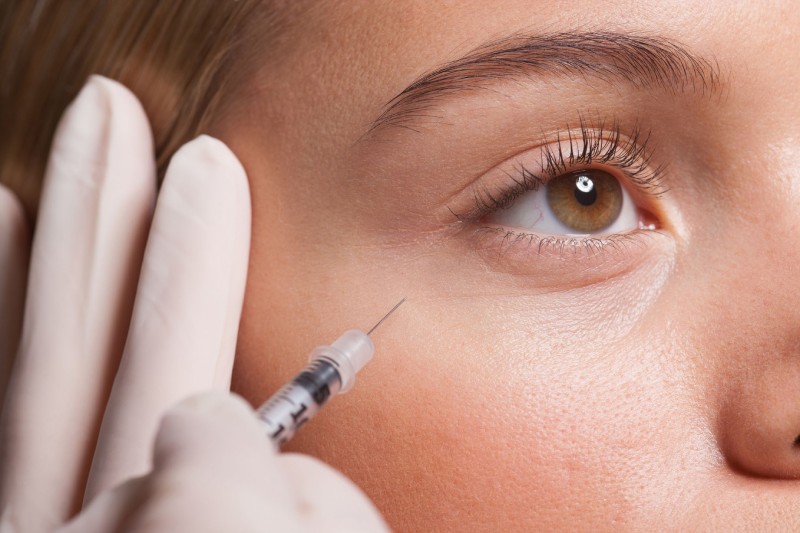Health
The Science Behind Botox: How It Erases Wrinkles and Fine Lines

Botox has established itself as a household name in the realm of cosmetic operations and has come to be associated with the pursuit of youthful, wrinkle-free skin. Have you ever been interested in learning more about the science behind Botox and how it efficiently reduces wrinkles and fine lines? This wonderful procedure has been incredibly popular over the years. Let’s explore the interesting world of Botox and learn the secrets behind its powerful rejuvenating abilities.
What is Botox?
Botulinum Toxin, also known as Botox, is produced by the bacterium Clostridium botulinum. It’s vital to remember that the Botox used in cosmetic procedures is a pure and safe form of the toxin, despite the fact that this bacterium is infamous for producing botulism, a rare but potentially fatal sickness. Its unusual ability to momentarily immobilize muscles gives it power, and this characteristic is what gives it its anti-aging properties.
Our skin develops fine lines and wrinkles as a result of repeated muscle contractions throughout time. Our muscles contract when we smile, frown, squint, or make any other face expression, causing the skin to fold and wrinkle. These repeated contractions over time cause lines to become visible, especially around the eyes.
How Does it Work?
This is where Botox is useful. A neurotransmitter called acetylcholine is blocked when Botox is injected into particular face muscles. This neurotransmitter is in charge of delivering signals from nerve cells that tell muscles to contract. Botox efficiently weakens and relaxes the targeted muscles by interfering with this communication, decreasing their capacity to contract vigorously.
The skin above the treated muscles smooths out, making wrinkles and fine lines less noticeable or even disappearing altogether. It usually takes a few days to a week for Botox to fully take action, and depending on the individual and the area treated, the effects might endure for several months.
Precision is one of the reasons Botox is so well-liked. A trained practitioner can target particular muscles while omitting others, producing outcomes that look natural. Due to its accuracy, Botox is a great option for treating dynamic wrinkles, which are lines that develop or worsen as a result of facial motions
It’s important to remember that Botox is not a long-term fix for aged skin. The transient effects progressively fade as the muscles treated resume their normal function. Patients often need retouch injections on a regular basis to maintain the results.
Is Botox Only for Face?
Botox is used to treat a number of medical issues in addition to cosmetic ones. Chronic headaches, excessive sweating (hyperhidrosis), and muscle spasms (dystonia) have all been successfully treated with it. Additionally, Botox is utilized to treat a few eye conditions and even helps those with overactive bladders.
Although when administered by a trained healthcare expert, Botox is usually regarded as safe, it is crucial for patients to speak with a licensed practitioner and go through their medical background and expectations in detail. Like any medical procedure, getting an injection can have some negative effects, which could include brief bruising, swelling, or slight discomfort. Although serious side effects are uncommon, they can happen if Botox is used incorrectly or in excess.
-

 Lifestyle4 weeks ago
Lifestyle4 weeks agoBob Gerace Discusses Coaching Themes: Confession, Reconciliation, Communication, Intimacy, and Fatherhood
-

 Education3 weeks ago
Education3 weeks agoAn Exclusive Interview With Holly Gold: The Heart and Vision Behind The Little Schools
-

 Travel4 weeks ago
Travel4 weeks ago8000 Voices, One Vibe — Ludhiana Sang Every Word with Talwiinder at Bangr Arena
-

 Business3 weeks ago
Business3 weeks agoCorporate Event Catering in Manchester: What Businesses Need to Know (and why Manchester sets the bar)
-
Tech4 weeks ago
Harrington Quality Management System (HQMS): Flagship Platform of Harrington Group International
-

 Apps3 weeks ago
Apps3 weeks agoCanva Launches AI-Powered Design Model and New Creative Features
-

 Business3 weeks ago
Business3 weeks agoCorporate Christmas Gifting Makes a Big Comeback
-

 Travel3 weeks ago
Travel3 weeks agoExploring Europe’s Most Photogenic Cities for Your Next Trip












